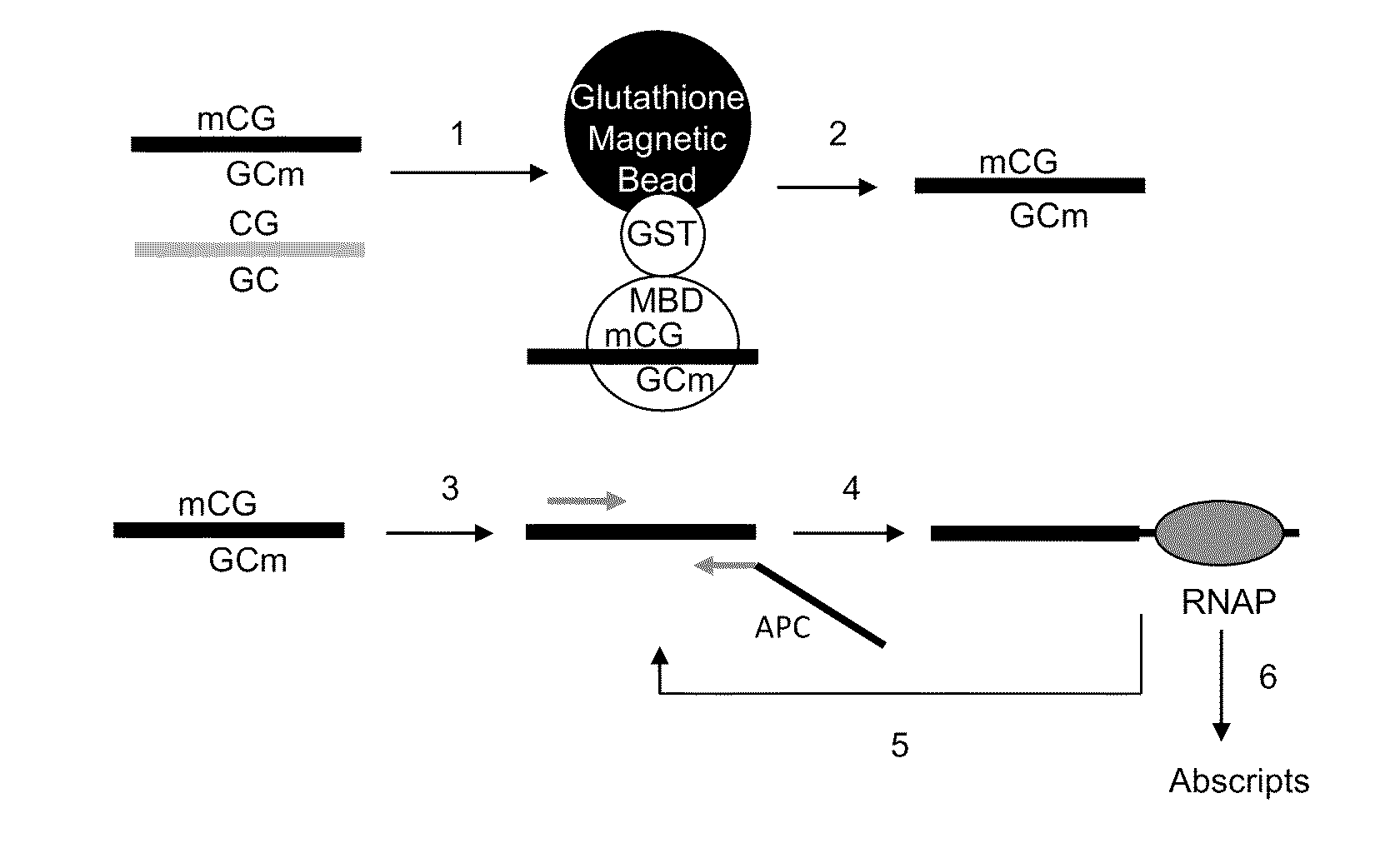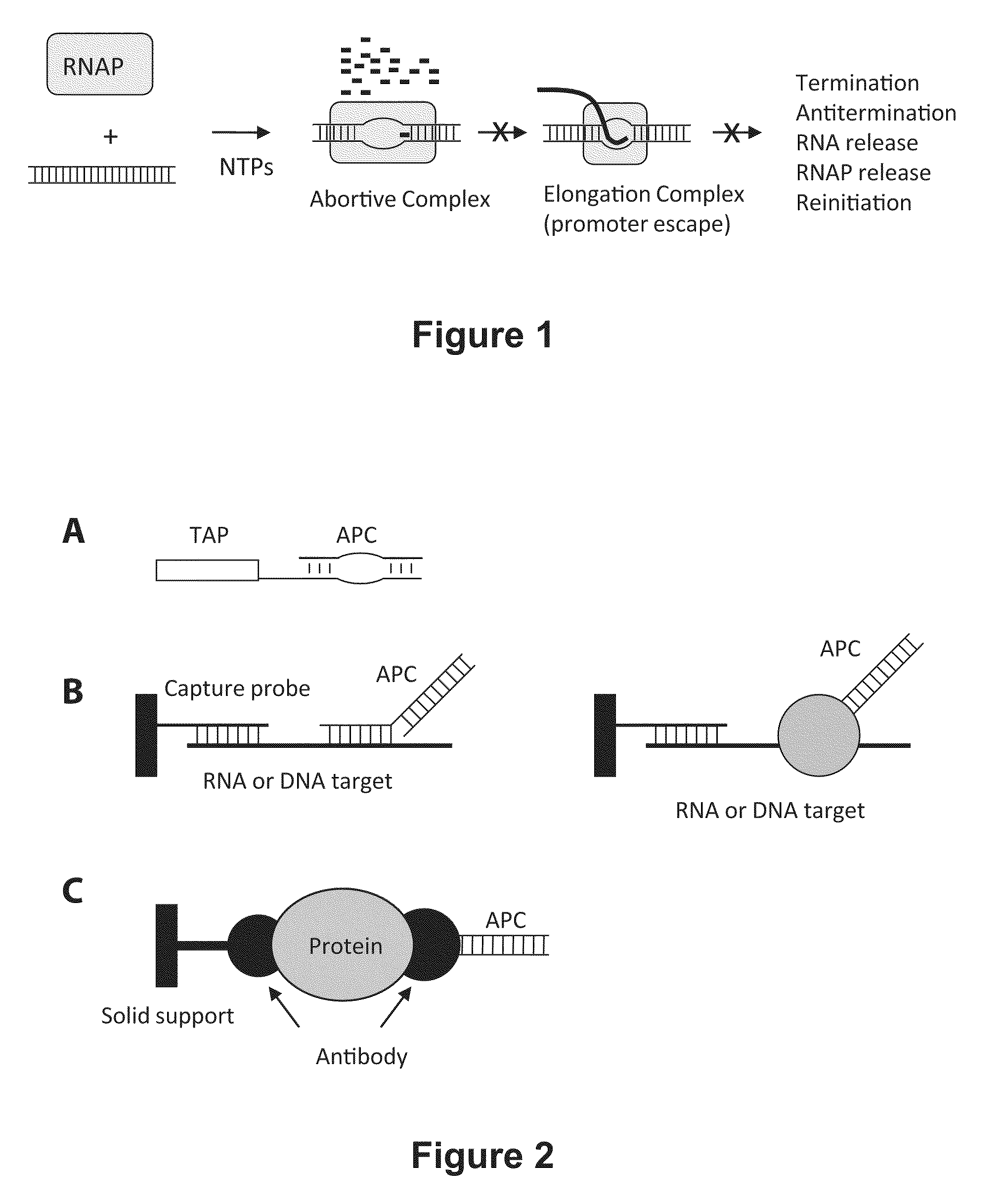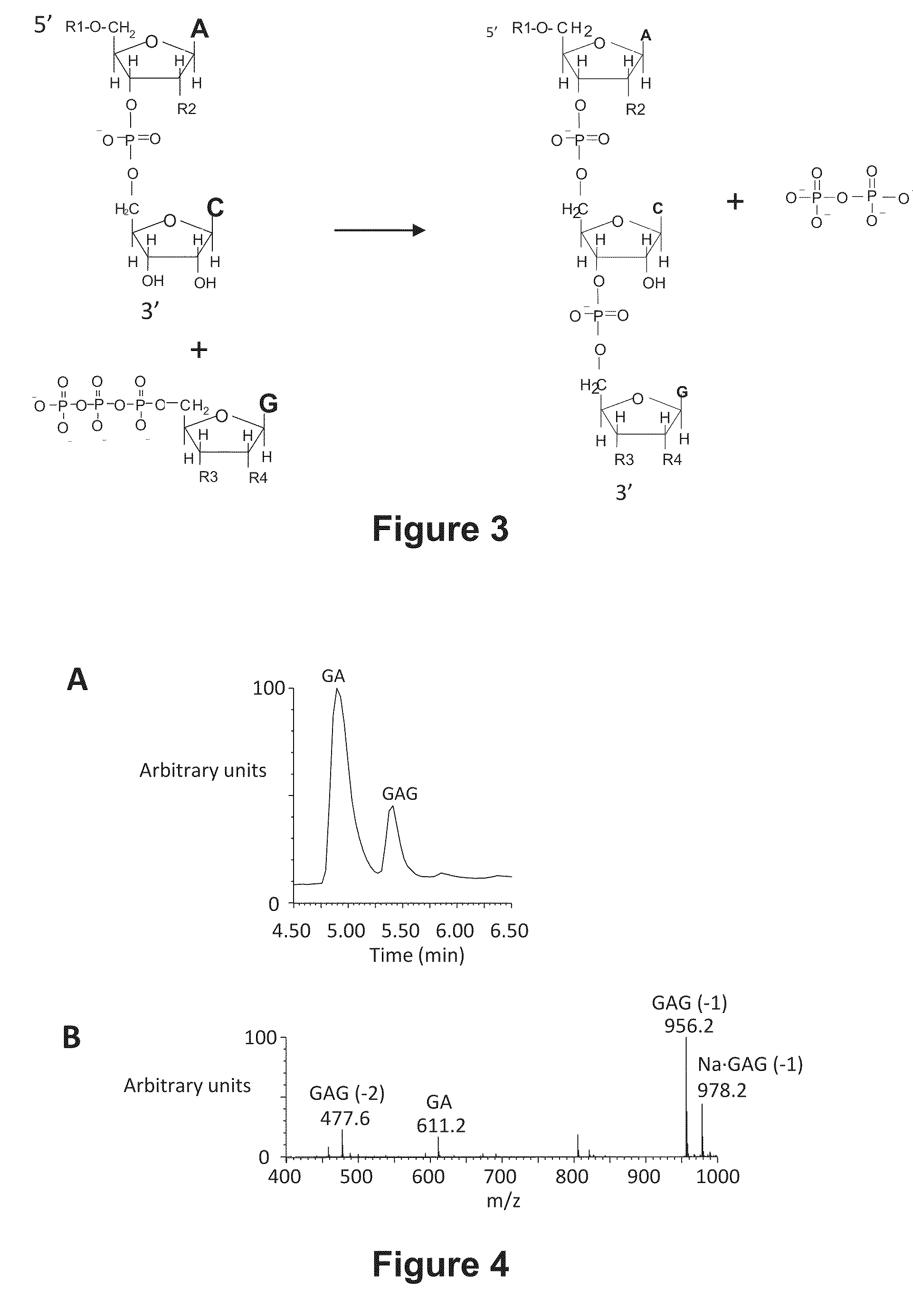Abscription based molecular detection
a molecular detection and molecular technology, applied in the field of abscription based molecular detection, can solve the problems of not being able to easily score partially methylated targets in methylated- or unmethylated-specific reactions, not being able to easily integrate into oligonucleotide primers, and not being able to achieve the effect of rapid separation of solid phases, improved method efficiency, and easy incorporation
- Summary
- Abstract
- Description
- Claims
- Application Information
AI Technical Summary
Benefits of technology
Problems solved by technology
Method used
Image
Examples
example 1
Abscription® Methods
[0090]Abscription® has been previously described; see e.g. U.S. patent application Ser. No. 09 / 984,664 (filed Oct. 30, 2001) now U.S. Pat. No. 7,045,319; Ser. No. 10 / 425,037 (filed Apr. 29, 2003), U.S. Pat. Pub. No. 2004-0054162; Ser. No. 10 / 600,581 (filed Jun. 23, 2003) now U.S. Pat. No. 7,541,165; Ser. No. 10 / 602,045 (filed Jun. 24, 2003)) now U.S. Pat. No. 7,468,261; Ser. No. 10 / 607,136 (filed Jun. 27, 2003), now U.S. Pat. No. 7,226,738; Ser. No. 10 / 686,713 (filed Oct. 17, 2003) U.S. Pat. Pub. No. 2004-0175724; Ser. No. 10 / 976,240 (filed Oct. 29, 2004-) U.S. Pat. Pub. No. 2005-0214796; Ser. No. 10 / 790,766 (filed Mar. 3, 2004) now U.S. Pat. No. 7,473,775; Ser. No. 10 / 488,971 (filed Oct. 18, 2004) now U.S. Pat. No. 7,470,511; and Ser. No. 10 / 551,775 (filed Sep. 14, 2006) U.S. Pat. Pub. No. 2006-0204964 the contents of each of which are incorporated by reference herein in their entirety.
example 2
Mass Spectrometry Detection of Abscripts
[0091]Trinucleotide Abscripts are detected by mass spectrometry following their fractionation from dinucleotide initiators by HPLC. The output of the fractionation is plotted as total ion count verses chromatographic retention time as illustrated in FIG. 4A. The chromatographic profile for any ion can be similarly plotted. The contributions of particular m / z species at a specific retention time can be summed to give the amount of Abscript as the area under the chromatographic peak. FIG. 4B shows the ion spectrum associated with the Abscript GAG (retention time of 5.4 min). The yield of GAG would be the sum of species with m / z values of 477.6, 956.1 and 978.2. These species account for doubly charged, singly charged and the sodium adduct respectively.
example 3
Preparation of GST-MBD Protein
[0092]A GST fusion protein that contains the methyl binding domain (MBD) from mouse MBD2 was constructed as illustrated in FIG. 5. The codons for the MBD domain were optimized for expression in E. coli. The construct contains a thrombin cleavage site between the GST and MBD domains. The GST protein also contains four surface cysteine residues that were used for attachment of APCs or Biotin. The details of the GST-MBD protein are provided in U.S. Patent Application No. 61 / 053,648, filed May 15, 2008 (now U.S. Patent Publication No. 2009-0298080) the contents of which are incorporated by reference herein, and in particular, Examples 2-11 describing the preparation and use of MBD fusion proteins.
[0093]The GST domain allows the fusion protein, or its complexes with methylated DNA, to be isolated on Glutathione resins or beads and eluted with glutathione, or to be captured or detected with antibodies that recognize GST.
[0094]MBD from the MBD2b protein was ch...
PUM
| Property | Measurement | Unit |
|---|---|---|
| retention time | aaaaa | aaaaa |
| temperatures | aaaaa | aaaaa |
| temperature | aaaaa | aaaaa |
Abstract
Description
Claims
Application Information
 Login to View More
Login to View More - R&D
- Intellectual Property
- Life Sciences
- Materials
- Tech Scout
- Unparalleled Data Quality
- Higher Quality Content
- 60% Fewer Hallucinations
Browse by: Latest US Patents, China's latest patents, Technical Efficacy Thesaurus, Application Domain, Technology Topic, Popular Technical Reports.
© 2025 PatSnap. All rights reserved.Legal|Privacy policy|Modern Slavery Act Transparency Statement|Sitemap|About US| Contact US: help@patsnap.com



